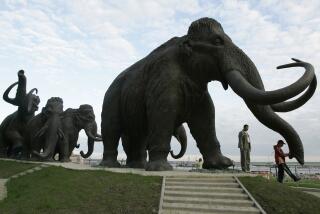Back to Nature
- Share via
To the great surprise and delight of wildlife conservation groups, the Reagan Administration has expressed willingness to consider the re-introduction of the gray wolf to Yellowstone National Park. The project, long dormant because of perceived political opposition, deserves support and should go forward.
For perhaps 2 million years the wolf was an integral part of the Yellowstone habitat. In 1915 a campaign was launched to eliminate canis lupus from the park as an alleged threat to deer, elk and other game. Humans being the most efficient predators of all, the last wolf sighting in the park was in 1975--and even that was not confirmed.
The revival of the wolf in Yellowstone is consistent with William Penn Mott’s view, as director of the National Park Service, that the nation’s first park should operate as a total natural ecosystem. “Where there are no predators and no normal natural balance, we may have to restore it,” Mott said during a Yellowstone visit last spring.
Wildlife officials believe that transplanted wolves would quickly establish themselves in Yellowstone’s vast wilderness areas. Wild game, the predator’s primary food source, is in abundance. Allowances would be made to protect livestock along the park’s borders and to compensate ranchers for losses. Old World legends notwithstanding, there would be no threat to humans. In fact, tourists participating in a poll on the re-introduction of the wolf heartly supported the idea.
There is possibly no greater statement of wildness than the ululating call of the wolf. To restore this handsome, curious, social animal to the Yellowstone back country will reestablish an important link in our natural heritage.
More to Read
Sign up for The Wild
We’ll help you find the best places to hike, bike and run, as well as the perfect silent spots for meditation and yoga.
You may occasionally receive promotional content from the Los Angeles Times.






